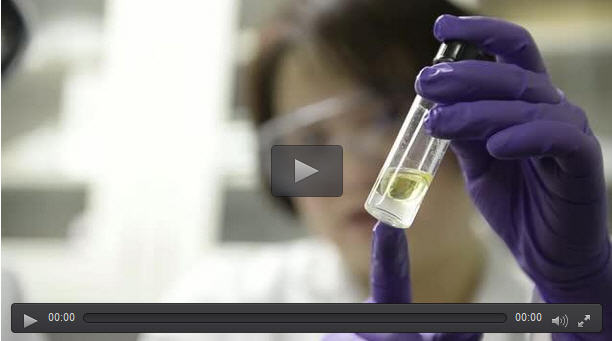Shaking the nanomaterials out

Nano implies small -- and that's great for use in medical devices, beauty products and smartphones -- but it's also a problem. All these tiny particles get into our water and are difficult to remove. Now, researchers Yoke Khin Yap and Dongyang Zhang have a novel and very simple way to take the nanomaterials out. Credit: Michigan Tech, Sarah Bird
Purifying water and greening nanotechnology could be as simple as shaking a vial of water and oil. At least that's the case for a new method to clean contaminated water full of unwanted nanomaterials.
Nano implies small–and that's great for use in medical devices, beauty products and smartphones–but it's also a problem.
The tiny nanoparticles, nanowires, nanotubes and other nanomaterials that make up our technology eventually find their way into water.
The Environmental Protection Agency says more 1,300 commercial products use some kind of nanomaterial. And we just don't know the full impact on health and the environment.
“These materials are very, very tiny and that means if you try to remove them and clean them out of contaminated water, that it's quite difficult,” says Dongyan Zhang, a research scientist at Michigan Technological University. She adds that techniques like filter paper or meshes often don't work.
Instead, shaking up oil and water traps the nanomaterials, which can be easily removed. The process clears out nearly 100 percent of nanowires, nanosheets, nanotubes and other one- and two-dimensional nanomaterials. Only zero-dimensional nanospheres are still too small to grab.
The study came out recently in the American Chemical Society's journal Applied Materials and Interfaces.
Media Contact
All latest news from the category: Life Sciences and Chemistry
Articles and reports from the Life Sciences and chemistry area deal with applied and basic research into modern biology, chemistry and human medicine.
Valuable information can be found on a range of life sciences fields including bacteriology, biochemistry, bionics, bioinformatics, biophysics, biotechnology, genetics, geobotany, human biology, marine biology, microbiology, molecular biology, cellular biology, zoology, bioinorganic chemistry, microchemistry and environmental chemistry.
Newest articles

A ‘language’ for ML models to predict nanopore properties
A large number of 2D materials like graphene can have nanopores – small holes formed by missing atoms through which foreign substances can pass. The properties of these nanopores dictate many…

Clinically validated, wearable ultrasound patch
… for continuous blood pressure monitoring. A team of researchers at the University of California San Diego has developed a new and improved wearable ultrasound patch for continuous and noninvasive…

A new puzzle piece for string theory research
Dr. Ksenia Fedosova from the Cluster of Excellence Mathematics Münster, along with an international research team, has proven a conjecture in string theory that physicists had proposed regarding certain equations….



